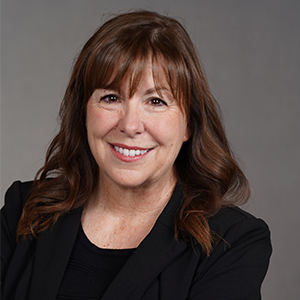I’ve interviewed 17 tech executives since we launched our HousingStack newsletter in September and I’ve been surprised and thankful for the candor and insight of each executive. Here are some of the highlights from those interviews on the important topics they’re thinking about.
On the right tech mindset:
Adam Carmel, Polly CEO: “When I was in lending, I think I always overestimated the impact technology or software, or more importantly, a switch in technology, would have on our business in the first six months or a year, and the difficulty in transitioning. But then I always underestimated the positive impact and ROI that technology could have over a two, three or four-year period.”
Rich Weidel, Princeton Mortgage CEO: “I’m in some owners working groups, and somebody will bring up a tech and either they’re having great success and we’re struggling with it, or we’re having great success and they’re struggling with it. And you see that the same technology deployed in different cultures and with different processes sometimes works and sometimes doesn’t work. So you have to ask: Are we utilizing the technology to its fullest capacity? And is it a tech problem, a people problem, a process problem, or some combination of those three?”
On parts of the homebuying process that still need automation:
Tim Bowler, ICE Mortgage Technology president: “As a technology provider, we want to find a better way to show the ability to repay so that the ultimate investor in that mortgage or the insurer feels comfortable with it without having to retain massive amounts of personal information on a multi-decade basis, which is inefficient for the system and puts that information at risk.”
Jimmy Kelly, Lone Wolf Technologies president and CEO: “I think there’s still kind of an old-school mentality: it’s a face-to-face, belly-to-belly style business. There are a lot of agents today that still prefer having their customers sign contracts manually, with physical signature. And there are some states or even some geographies within states that still mandate that. But it’s weird. Because in our view, that’s a thing of the past. Digital signature in electronic form is more secure, much more expedient, much more efficient.”
What should we be paying attention to that we’re not?
John Ashley, PRMG CIO and CISO: “Privacy is a huge area. In Europe, with GDPR, they’re pretty far ahead of us, but our government is catching up really fast. But the biggest thing is just the web of state regulations. Companies that learn how to navigate the privacy landscape are going to have a really strong competitive advantage. But it’s not an easy landscape to navigate. We wrangle with it every week.”
Leveraging AI:
Pavan Agarwal, CEO of Sun West Mortgage and creator of Angel AI: “I think the combination of market conditions and AI tech, and then this generation gap in the originators versus customers — those three are a perfect storm. They are a forest fire and today’s redwoods are gonna get slashed and burned and new seedlings are going to be the next forest. And you can already see it — I’m talking to lenders, brokers, originators who right now have this new generation mindset. They understand what 20-somethings want, and they don’t want to talk to their bankers on the phone, and yet we see brokers who don’t want to talk to AI, they can’t do business unless they talk to someone.”
Matt Lehnen, Deephaven Mortgage CTO: “For our clients and our customers: AI also has to be used fairly. You don’t want to just feed a bunch of data into a model, get the result and take it at face value. You want to interpret it and make sense of it. AI should be a tool to help get you somewhere faster, or double check your work or improve things. But you never want to rely solely on that for decisions, because you still have to be fair, equitable and do things in an in a transparent way.”
David Coleman, MISMO president: “One [way of leveraging] is kind of creating your own sandbox for your AI to run. In other words, don’t use chatGPT and let it run across the Internet and share your intellectual property and use God knows what for a source for learning. You have to have control over that source for learning. The other thing is that you need to have a way to start figuring out how to monitor your AI. I talked to someone today about: are we too late for AI risk management? The contention is that we are not. But he said there’s a set of questions that you need to set up for your AI that have reliable responses, that based upon the response, you know that you’re still controlling it and it’s not controlling you.”
Jason Bressler, UWM CTO: “From a generative standpoint, it obviously puts information at the fingertips of our team members and our brokers. But the real oomph that comes with AI is the large language modeling and how you can get so predictive with the data that you have. And then you can use AI to very accurately detect fraud, for example. You can use AI to very accurately build out a data lake that gives you access to multitudes of different data streams and shows you things that you didn’t even know that you needed to know, to make great business decisions. From a data standpoint it’s those things that have changed the game.”
On buy versus build:
Rick Arvielo, New American Funding co-founder and CEO: “About a year and a half ago, we made the decision to rely on some offshore assistance. But having some experience with that, I didn’t really want to find contract offshore providers. So we decided to open our own company in India: NAF Tech India. We have about 150 New American Funding employees over there now to help supplement our somewhat lofty tech build goal. We’ve been using contractors here and there for some time just because it’s often a lower cost, but what we find is with contractors, oftentimes, they’ll give you their “A” players to get you into contract and then they move those people on to their next target. Then you’re left with people that don’t measure up to the initial bar. So, we just realized that the only way that we were going to control that world is to own it ourselves — and it’s quite an undertaking.”
On leveraging data:
Nicholas Guillen, BaseCap Analytics co-founder: “The biggest challenge every company has is that the amount of data that’s created now is greater than all of the data created in history. And it’s because every single person is creating data. We’ve thought of data quality as business quality — it is critical for businesses to have good, accurate data to be able to make faster decisions…In the 90s, I think the priority was to warehouse data, just have data sit somewhere. In the 2000s, the priority was making data accessible and having “big data,” if you will. But in the past five to 10 years, the priority is no longer just having access to data. Everyone’s using data, but it’s how you use it.”
Scot Rose, Class Valuation CIO: “If we’re collecting the data upfront at point of list to support these processes that are now available, like IBW, inspection based waivers, or desktop appraisals — which the GSEs have rolled out in the last year — an appraiser can do an appraisal in a matter of hours. And the result is a more accurate appraisal because it’s more independent and appraisers have to base their opinions off the data being provided.”
Kate Amor, Guaranteed Rate SVP and head of enterprise products: When blockchain HELOCs became a thing, I thought about, where does data lead us in this equation? To me, it’s still one of the most interesting conversations because it’s really a conversation about data and ledgers and what that means for how we bring data into the process. Because technology can have all these great ideas, but if we can’t get into a format that ultimately goes into the secondary markets and people are going to buy, this is where the breakdown occurs. And so thinking about how to be part of that long-term solution that could really benefit customers in the long run is cool.
Kenon Chen, Clear Capital‘s EVP of strategy and growth: “The GSEs say all the time that they didn’t redesign these processes to replace appraisers, but to add more objectivity to the process, to create efficiencies in the process. Regardless of the tech used, there are human eyes reading, observing and looking at the data or a model, but starting with objective truth about the subject property is essential. And having a process that’s repeatable and standardized and consistent in every community — that’s where tech really helps.”
What keeps you up at night?
Tom Conkright, CertifID co-founder and executive chairman: “All of it does! It’s wire transfer fraud but more importantly I would say it’s the social engineering because we look at wire transfer now as the monetization of social engineering. So our mission now and will continue to be all about validating identity…The other thing that keeps me up at night is that there’s still a large optimism bias that drives behavior around a lot of things in our industry. People think, that’s not my risk. I’ve heard about it, but that’s not going to happen to me — I’m sitting in some rural area in Northern Michigan and no one is going to pick on a $40,000 lot. Let me tell you: they absolutely will.”
Dealing with legacy systems:
George Brady, loanDepot CIO: “When you talk about technical debt, there’s a lot that you build up — there’s shortcuts you take over a 14-year period, there’s things that you deploy to be first to market that you wish, in hindsight, you would have done a little bit differently. We get to clean up a whole bunch of things and really strengthen the core foundation of the technology, and the data infrastructure, which really sets the company up very, very well for the next decade and beyond. And that data foundation is a precursor to success from an AI and machine learning perspective.”
Prioritizing the right tech:
Kirill Klokov, Truv CEO: “The Northstar that I keep telling my team: nobody wants your product, everybody wants a solution to their problem. And the more you use your product to solve their problem, the more you’re going to be successful as a business. Our No. 1 value is customer obsession. You can get everything else wrong, but if you build what customers want, you’ll be good as a business.”






